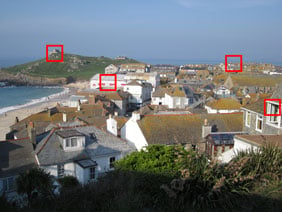Canon PowerShot A1200
-
-
Written by Gordon Laing
Quality
Canon PowerShot A1200 vs Canon PowerShot A800 vs Nikon COOLPIX L24 Real-life resolution
Canon PowerShot A1200 results : Real-life resolution / High ISO Noise
Canon PowerShot A1200 |
Canon PowerShot A800 |
Nikon COOLPIX L24 | ||
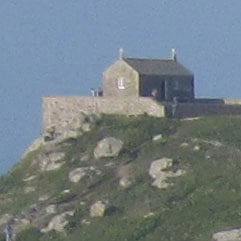 | 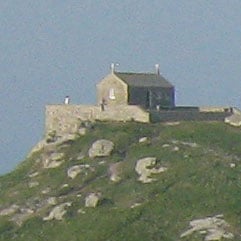 | 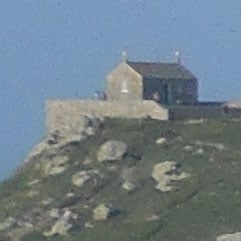 | ||
f3.5, 80 ISO |
f9, 100 ISO |
f5.5, 80 ISO | ||
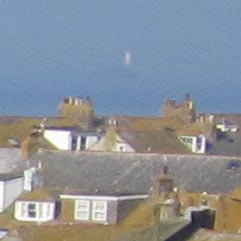 | 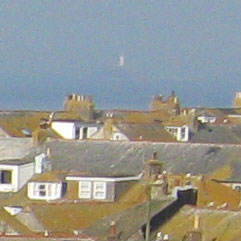 | 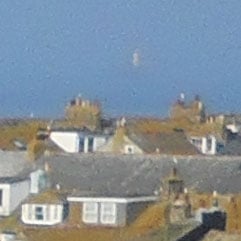 | ||
f3.5, 80 ISO |
f9, 100 ISO |
f5.5, 80 ISO | ||
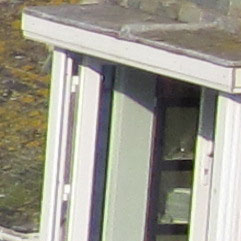 | 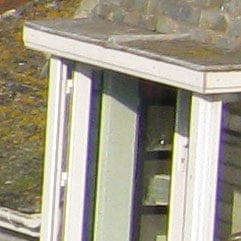 | 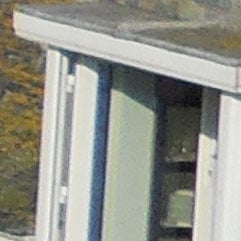 | ||
f3.5, 80 ISO |
f9, 100 ISO |
f5.5, 80 ISO | ||
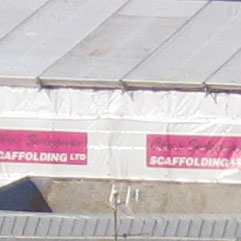 | 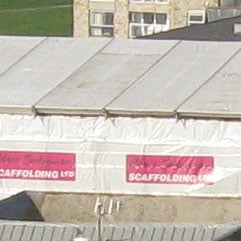 | 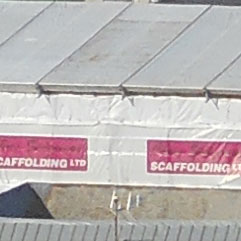 | ||
f3.5, 80 ISO |
f9, 100 ISO |
f5.5, 80 ISO |
The above image was taken with the Canon PowerShot A1200. The lens was zoomed to a focal length of 7.4mm (41mm equivalent) to provide a comparable field of view with the PowerShot A800 and Nikon COOLPIX L24. The metering selected an exposure of 1/1000 at f3.5 with the sensitivity at 80 ISO. The original 4000 x 3000 pixel image had a file size of 3.12MB. The crops are taken from the areas marked with red rectangles and are presented here at 100%. The ISO sensitivity on the two PowerShot compacts was set to the lowest available setting – 80 ISO on the PowerShot A1200 and 100 ISO on the PowerShot A800. The Nikon COOLPIX doesn’t allow manual setting of the ISO sensistivity but, in the bright sunny conditions automatically selected 80 ISO. Overall, a nice result from the PowerShot A1200 in Program mode. The exposure is good, the histogram shows slight clipping on the right side due to the wide tonal range in the scene, but there’s good detail in the highlights and the foreground shadows aren’t filled in. Overall contrast is good and the colours are vibrant with good white balance though it’s possibly a little on the blue side for some people’s taste. The crops show an equally positive picture, but close examination reveals some aspects of the PowerShot A1200’s image quality that are less than optimal. Firstly, there’s quite a lot of noise in areas of flat colour. The sky in the first crop and and the sky and sea area in the top half of the second crop look visibly grainy. It’s not just a problem in flat areas of colour, image detail is suffering as a result; the detail in the chapel walls, the crosses on the roof and the windows in the foreground of the lighthouse crop all look a little fuzzy and indistinct. In the third crop from close to the frame edge there’s a slight amount of purple fringing caused by Chromatic aberration, had the PowerShot A1200’s metering opted for a slighly smaller aperture this may not have occurred. Lastly, the crop from the centre of the frame is consistent with the results from elsewhere, with the overall pattern of noise slightly obscuring finer image detail like the lettering on the banners and the aerial and roof struts in the bottom of the frame. By comparison, the crops from the PowerShot A800 look significantly better. Like the PowerShot A1200, the A800 also suffers a little from noise. It’s visible in the sea and sky, but it’s not quite as intrusive as on the A1200 crops and, crucially, it isn’t affecting the fine image detail which in all four crops is cleaner, sharper and more detailed than on the PowerShot A1200. It’s interesting that the A1200 metering chose an aperture of f3.5 (the largest available at this focal length), whereas the A800, also in Program mode, selected f9. Somewhere in the middle of those two probably would have produced better results from the lens, though it would have done nothing to alleviate the noise. The Nikon COOLPIX L24’s metering made a more judicious choice of aperture, but the results are nonetheless quite disappointing. The COOLPIX crops look, it has to be said, pretty clumpy. There’s a high degree of noise present in all the crops and you don’t have to look hard, at least not with these 100 percent crops, to see it. If this is what happens when you attempt to produce a budget 14 Megapixel compact, we’d prefer to see Nikon stick with lower resolution sensors for its budget models. Now let’s see how they compare at higher sensitivities in our High ISO Noise results. | |||||||
Canon PowerShot A1200 vs Canon PowerShot A800 vs Nikon COOLPIX L24 High ISO Noise
Canon PowerShot A1200 results : Real-life resolution / High ISO Noise
Canon PowerShot A1200 results : Real-life resolution / High ISO Noise
|
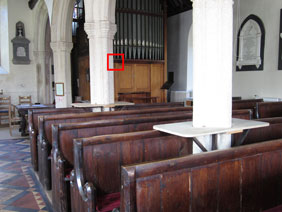 | To compare noise levels under real-life conditions we shot this scene with the Canon PowerShot A1200, the Canon PowerShot A800 and the Nikon COOLPIX L24 within a few moments of each other using their best quality JPEG settings at each of their ISO sensitivity settings. |
The PowerShot A1200 and PowerShot A800 were set to Program mode and the COOLPIX L24 was set to auto mode. The lenses were set to approximate the same field of view and ISO was manually set on the PowerShot A1200 and the PowerShot A800. ISO sensitivity can’t be set manually on the Nikon COOLPIX L24, but a series of shots taken in auto mode yielded results at ISO settings of 80 and 400 which we’ve shown here for comparison purposes.
The above shot was taken with the the Canon PowerShot A1200 in Program mode. The lens was zoomed to a focal length of 6.4mm (36mm equivalent) to provide a similar field of view to the PowerShot A800 and COOLPIX L24. The ISO sensitivity was set to 80 ISO and the exposure was 0.3 of a second at f3.2. The crops are taken from the area marked with the red square and presented below at 100%.
Let’s start with the 80 ISO crop. This is the sensitivity setting you’re going to be using, light permitting, for the best quality and it delivers good results. It’s not as good as it could be though, there is evidence of noise and there’s not the usual crisp detail in the stone column on the right or the wood panelling on the left that we’ve grown accustomed to seeing in low ISO crops from Canon compact sensors. Having said that, it has a slight edge over the quality of the next step up the scale at 100 ISO.
At 200 ISO there’s a more proounced deterioration in quality. There’s more noise, more evidence of processing and less image detail as a result. The fine detail in the stone column is still visible, but softer and the wood panelling looks a little smeary. More worrying is that the ledge of the stone column, which should be crisply defined, is begining to break up. Normally we wouldn’t expect to see this until much higher up the ISO scale.
At 400 ISO things take another turn for the worse. You would, of course, expect this kind of linear degradation as you select progessively higher ISO sensitivities. The problem with the PowerShot A1200 is that the degree of worsening at each step is quite marked, so that by the time you get to 400 ISO, as you can see from the crop, image detail is beginning to suffer quite badly. At ISO settings of 800 and above you won’t need to be looking at 100 percent crops appreciate how badly image quality has sufferred. Whereas 1600 ISO is usualy the watershed point – only for ‘must have’ shots where quality isn’t an issue, on the PowerShot A1200 that point is easily reached at 800 ISO.
As was the case in our outdoors test, the crops from the Canon PowerShot A800 show more detail than those from the PowerShot A1200. The 100 ISO crop from the the PowerShot A800 looks cleaner, sharper and more detailed than the 80 ISO crop from the PowerShot A1200 which looks soft and processed by comparison. This quality disparity continues all the way up the sensitivity range and the result is that by 400 ISO the PowerShot A800 is stil producing great results while the Powershot A1200 crop is soft and grainy with the loss of moderately fine detail. In the absence of image stabilisation, you’ll still be able to get good shots at 400 ISO with the PowerShot A800, but we’re not sure you can say the same for the PowerShot A1200.
With only two crops to compare, at 80 and 400 ISO it’s harder to make comparison with the Nikon COOLPIX L24. The 80 ISO crop shows pretty good image detail, though it’s less well exposed than the Canon crops and the colour balance has gone awry. At 400 ISO the white balance has recovered, but the noise and processing artifacts have combined to produce a poor result that could easily be mistaken for a 1600 ISO crop.
Now head over to our Canon PowerShot A1200 gallery to see some more real-life shots in a variety of conditions.
Canon PowerShot A1200 |
Canon PowerShot A800 |
Nikon COOLPIX L24 | ||
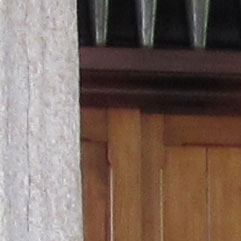 | 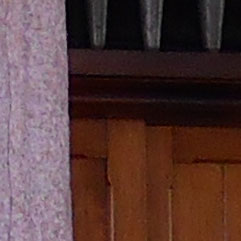 | |||
80 ISO |
80 ISO Not available |
80 ISO | ||
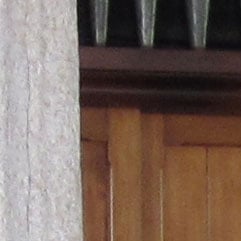 | 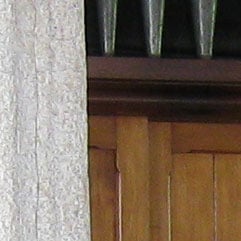 | |||
100 ISO |
100 ISO |
100 ISO | ||
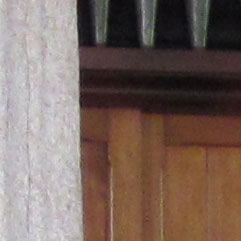 | 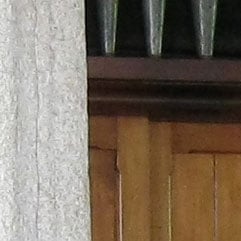 | |||
200 ISO |
200 ISO |
200 ISO | ||
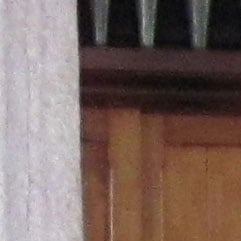 | 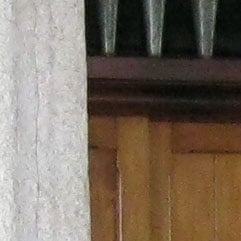 | 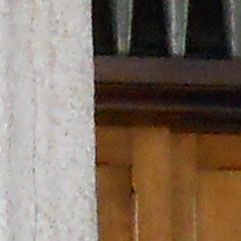 | ||
400 ISO |
400 ISO |
400 ISO | ||
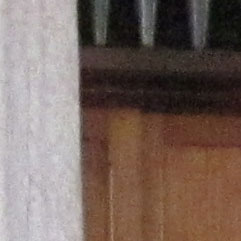 | 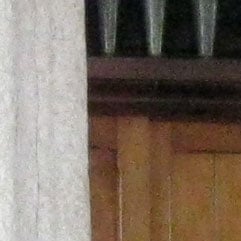 | |||
800 ISO |
800 ISO | |||
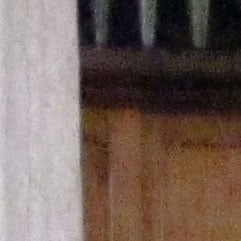 |  | |||
1600 ISO |
1600 ISO | |||
 |  | |||
1600 ISO Low light (2M) |
1600 ISO Low light (2M) | |||
